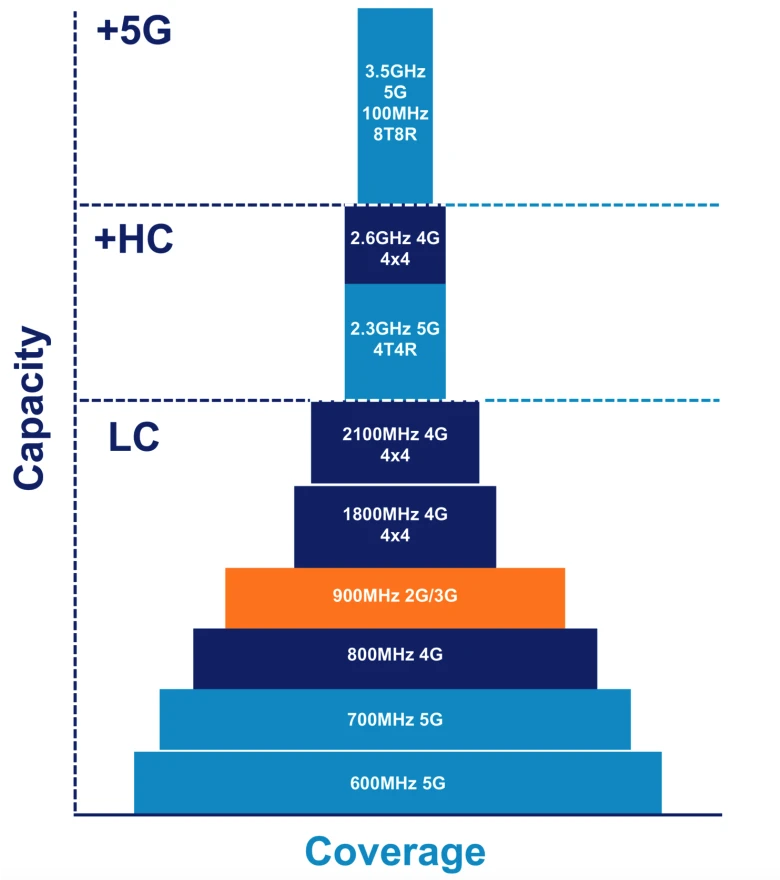

Frequency bands in telecom networks impact the speed, coverage, and capacity of communications. What frequency band is best?
To answer that question, and determine which band is best for optimizing performance, let’s take a look at the strategic deployment of frequency bands.
Envision a telecom network as a layered cake. Each layer represents a different frequency band, contributing in various ways to coverage and capacity. The lower layers, such as the 700 MHz band, provide wide coverage but limited capacity, forming the network’s foundation. This is the 600 MHz to 900 MHz frequency band.
As you ascend higher on the layers, including the 5G bands, capacity increases but coverage is reduced. Finding a balance with both is crucial for optimizing both reach and performance.
Lower frequency bands
These bands can cover larger distances and travel through barriers well. They operate at slower speeds and work well in more rural environments. They also have superior in-building penetration, which can be used to provide improved indoor coverage in cities.
Higher frequency bands
These bands have more bandwidth and can carry more data, making them ideal for high-speed data transmission. They travel faster, but only for a limited range. This makes them better suited for higher populated urban areas.
Mid-bands
These bands offer a good mixture of capacity and coverage. They have been the best option for city-wide capacity.
5G operates on all three frequency bands: low, mid, and high. The high-band range of 5G typically works in the 24 GHz to 39 GHz range, bands that are also known as millimeter wave (mmWave) because of the quantity of high-band spectrum available. High-energy mmWave bands offer fast performance. However, they travel shorter distances.


Optimizing Capacity and Coverage
Let’s take a football stadium as an example. Because its geographic area is relatively small compared to the city surrounding it, coverage (reach) is not a challenge. Low-frequency bands can handle coverage for the entire stadium.
Network capacity comes into play when that same stadium is filled with thousands of fans. People will want to talk, text, and send photos. The deployment of higher frequency bands will be required as more people fill the stadium.
It is the network provider’s challenge to find the ideal balance between coverage and capacity.
Mobile network operators (MNOs) use a variety of techniques to optimize performance. How the network infrastructure is designed and deployed is fundamental, as is adjusting network parameters to improve quality and efficiency.
MNOs continually deploy more advanced technology, including alternatives to towers such as monopoles, that use different frequency bands they’ve purchased spectrum on. This adds support for more advanced cellular features and allows them to deliver improved capacity. Other techniques to optimize performance include:
- Continuously monitoring mobile app network performance and making adjustments in real time.
- “Drive testing” the network by collecting real-world data on performance in a variety of environments and conditions.
- Monitoring and measuring network security using tools such as security audits and vulnerability assessments.
We have come a long way since cellular network technology was introduced in the 1980s, a time when mobile networks used the first generation (1G) of mobile technology. Back then large analog antennas could handle only voice communications. Coverage was limited and there were only a few users.
Since then, we have seen astonishing advances to today’s 5G networks, thanks to mobile network operators’ ability to optimize and strategically deploy frequency bands.
